Continuing our established traditions, we have created new activity sheets for young nature explorers for Easter!
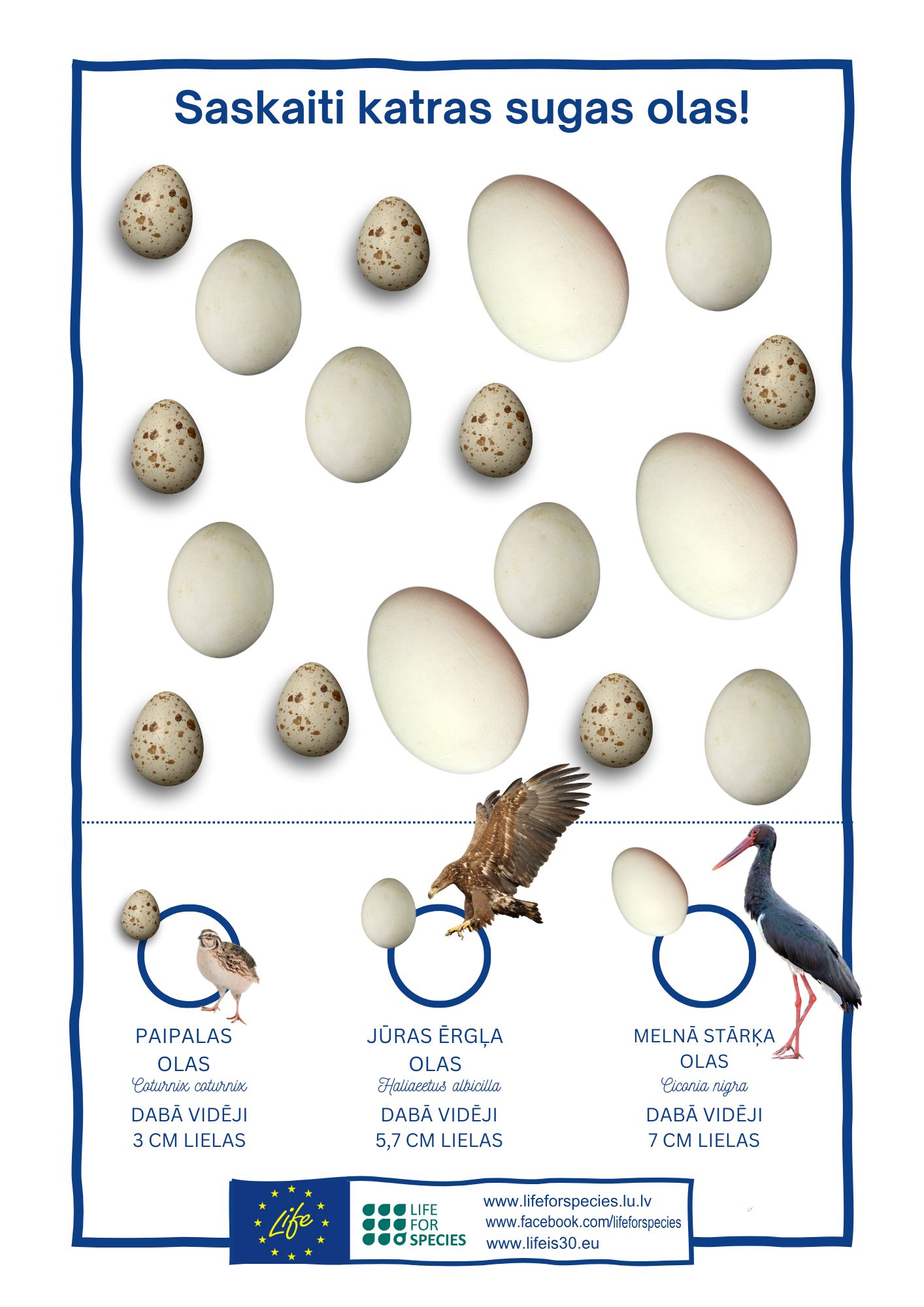

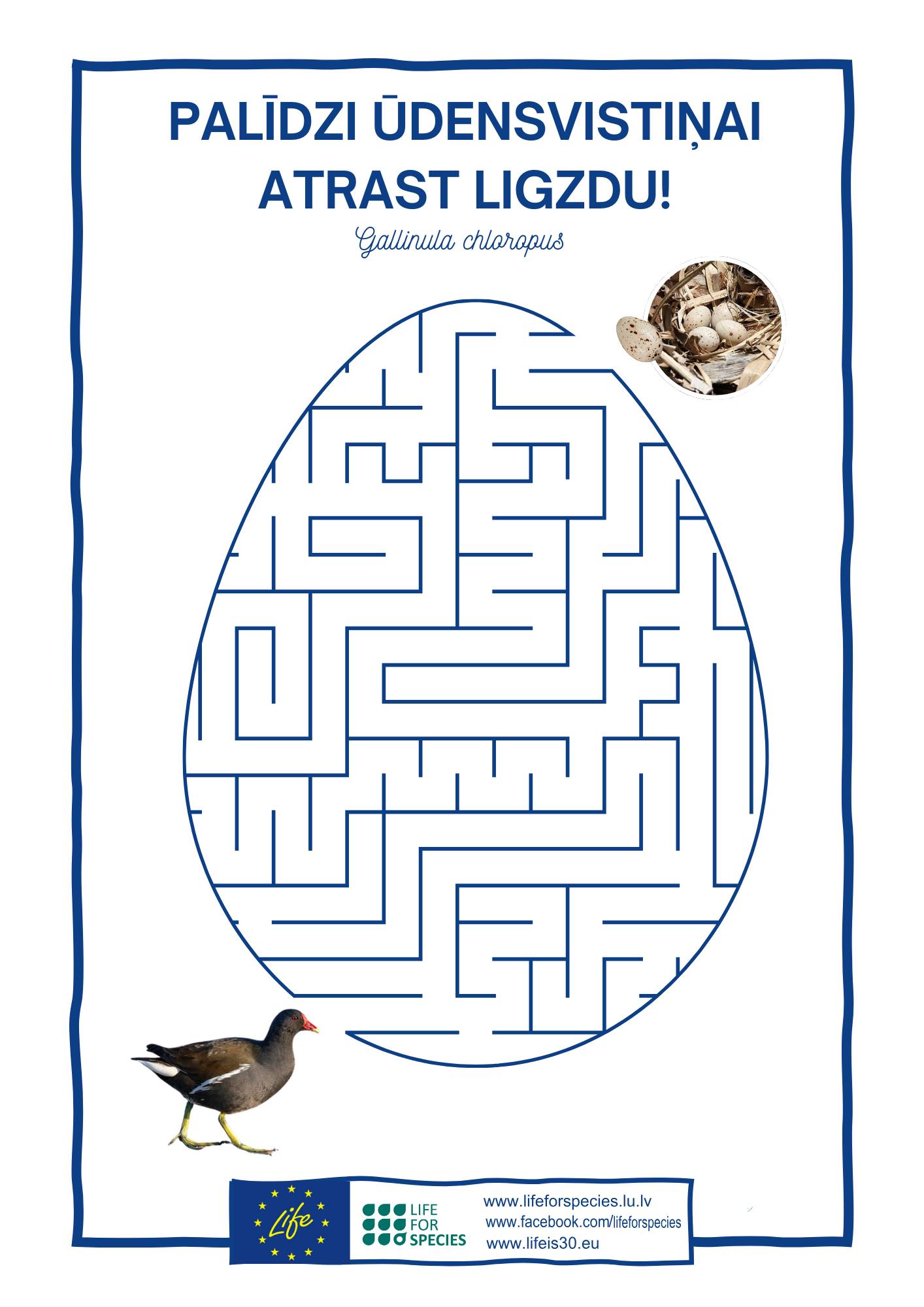
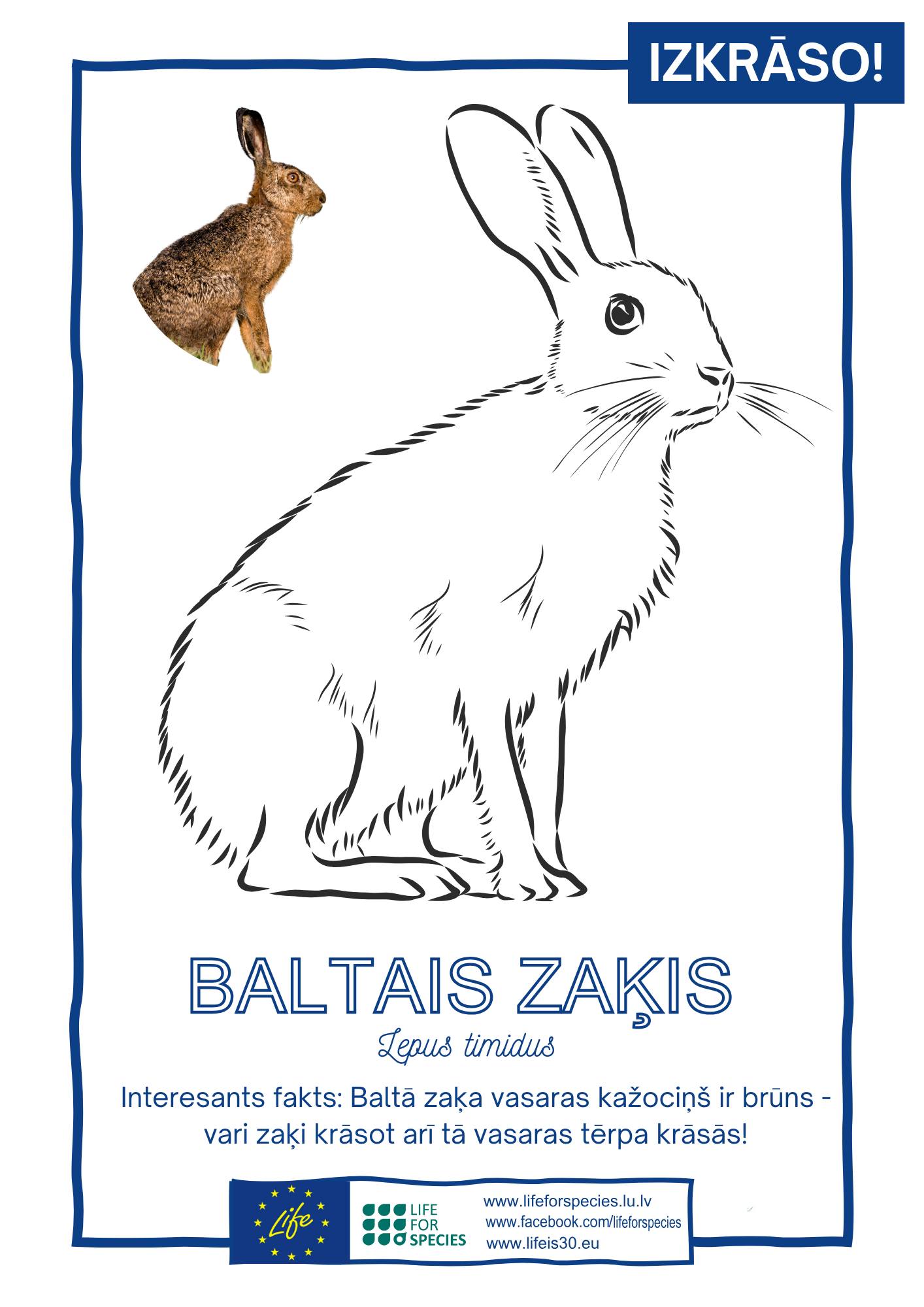
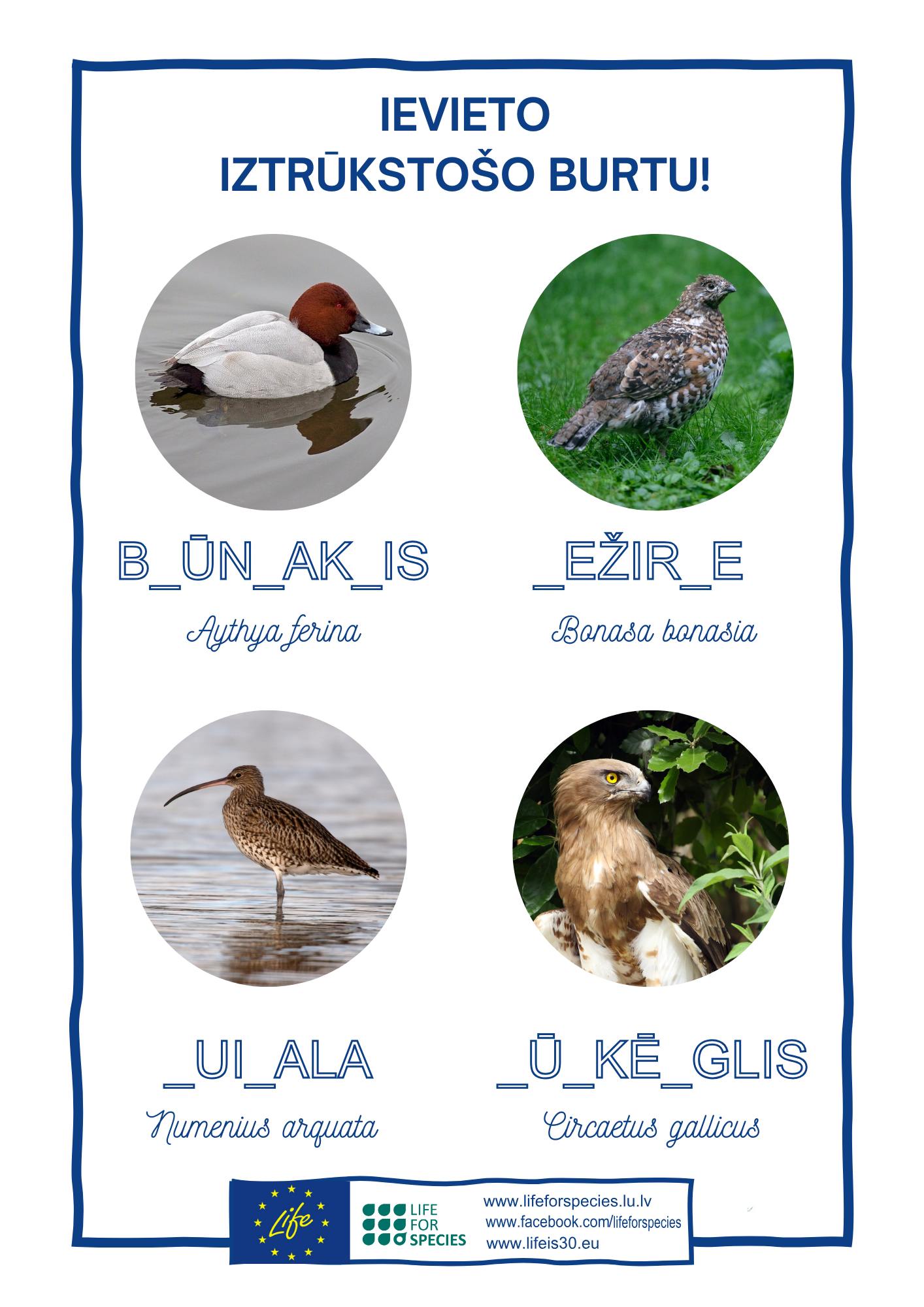
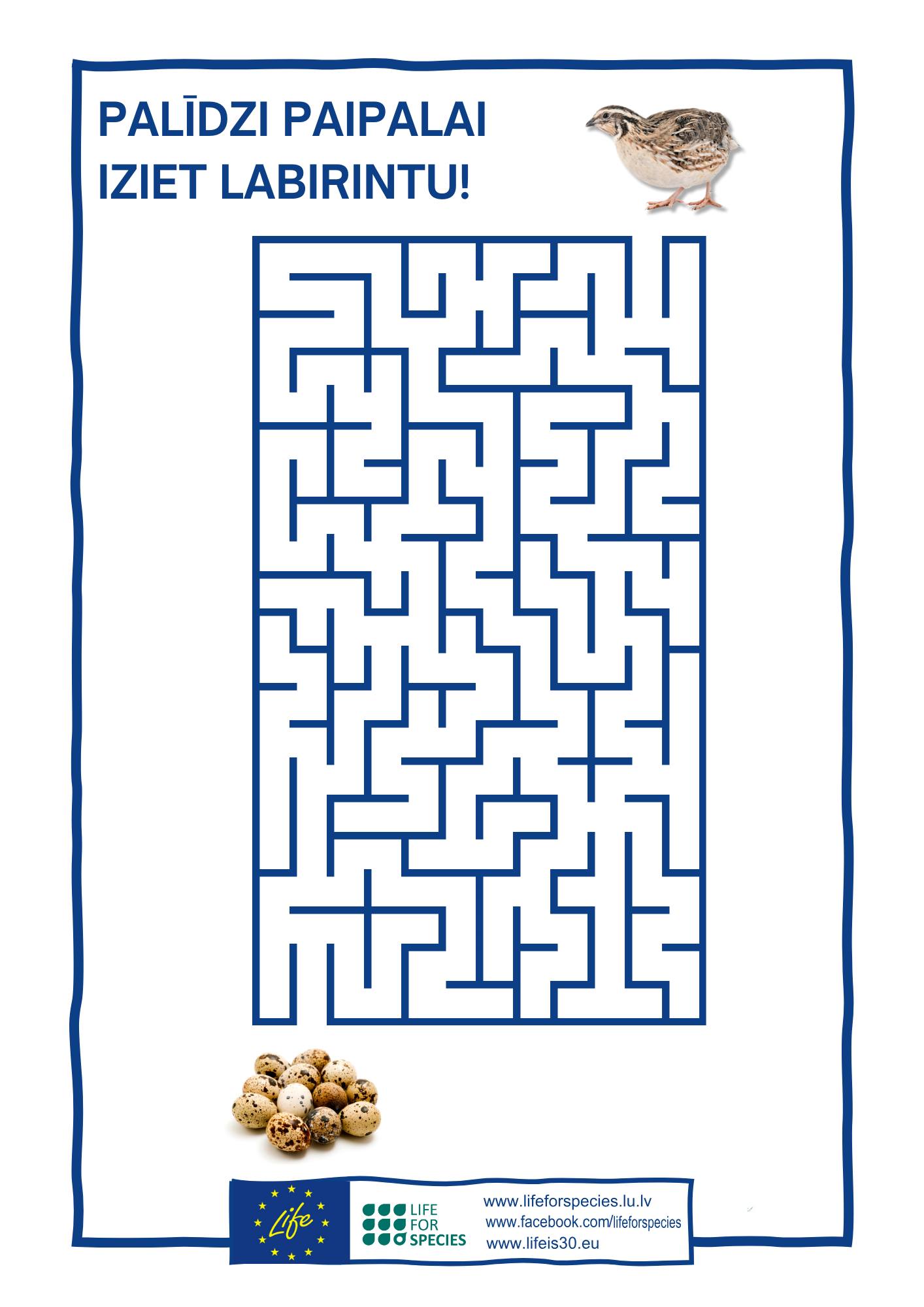
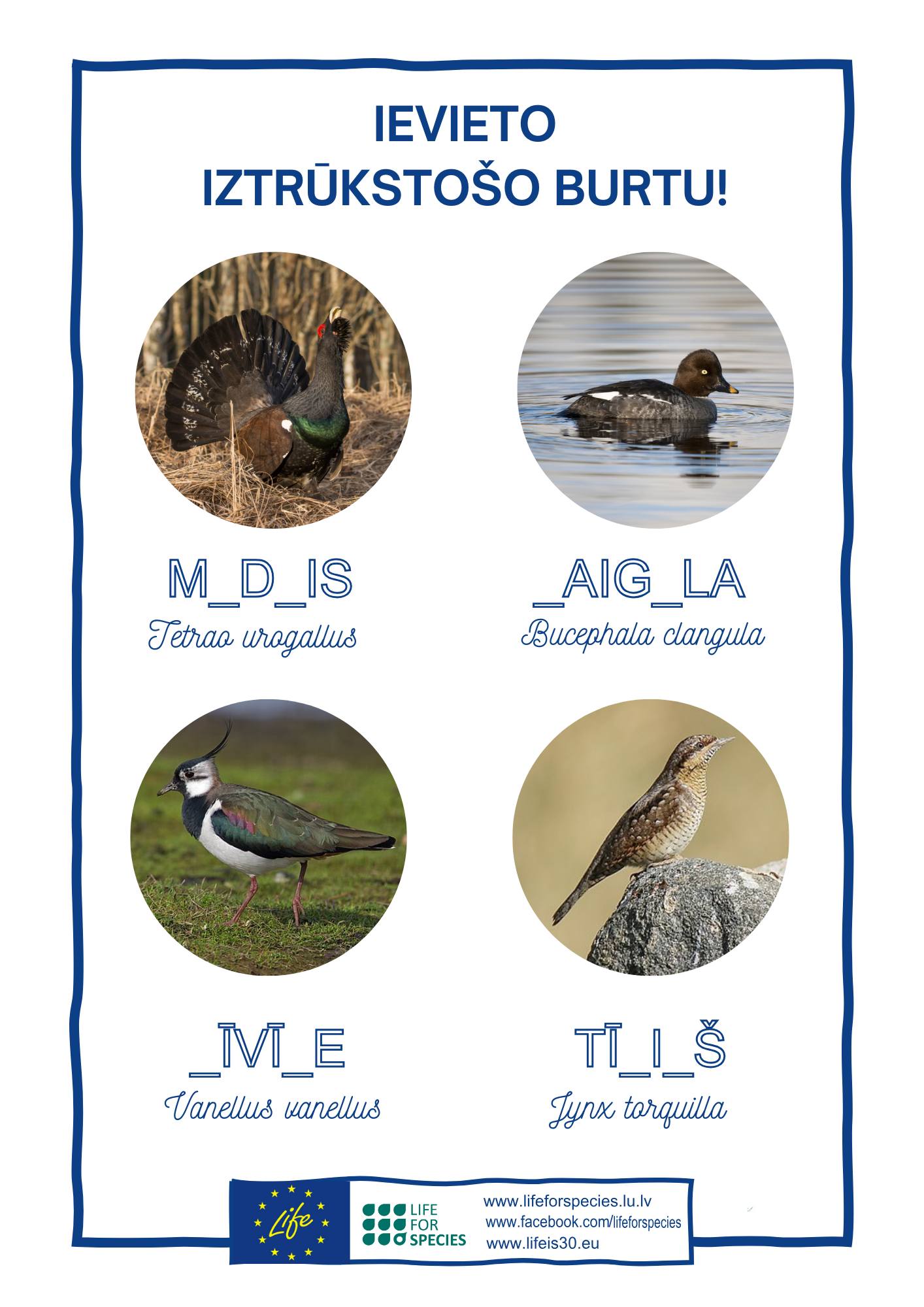
Printable files for all materials, as well as activity sheets prepared for previous holidays, are available here: https://ej.uz/LFSaktivitasulapas
We would be delighted to receive photos of your completed and colored activity sheets on our social media channels (Facebook; Instagram).
Both previously prepared and future activity sheets will also be available in the "Materials" section of our website. The activity sheets have been developed as part of the D2 activity.
4o
The quail is a small bird from the pheasant subfamily, measuring only 16 - 18 cm in length. The bird's weight is also minimal, typically ranging from 70 - 140 grams. The heaviest weights are observed before migration begins and at the end of the breeding season. It is also noted that female quails are often slightly heavier than males.
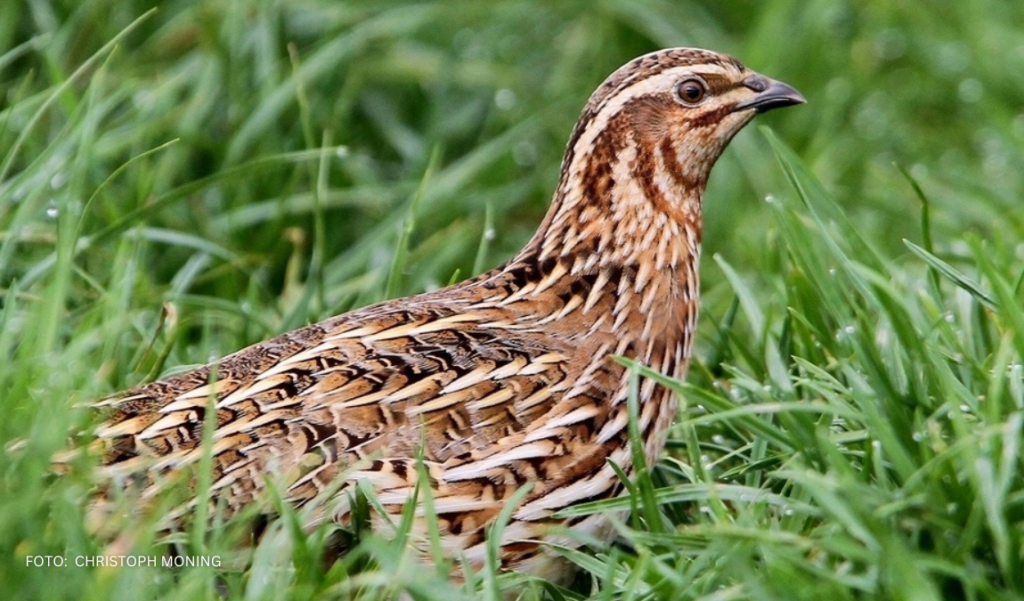
Quails are adorned with a mottled yellow-brown plumage, featuring a mix of lighter and darker stripes. The underside is white, and males have a white stripe above the eyes, resembling eyebrows. This terrestrial species mostly prefers a diet of various seeds and small invertebrates.
The quail has a wide distribution range and can be found across most of Europe, parts of Western Asia, and Africa. It is a migratory bird.
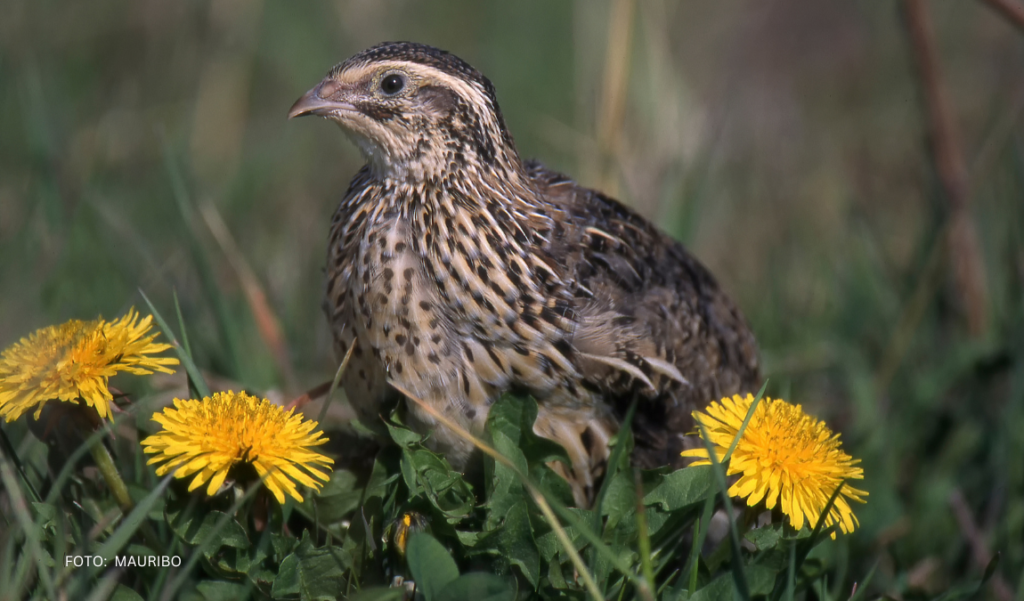
Quails inhabit terrestrial environments in temperate climates and tropical zones. They are most commonly found in grassland habitats, especially in very long and thick grass. The species does not favor forest edges and meadow margins as much but can be seen in cereal fields. Quails are challenging to spot in the wild as they hide in crops or long grass and are reluctant to fly. To avoid potential threats, quails prefer to run rather than fly. If startled, they will usually take to the air for a short distance before landing elsewhere in the grass to hide again. Therefore, quails are more often heard than seen, especially recognizable by the males' singing, most commonly heard in the mornings and evenings.
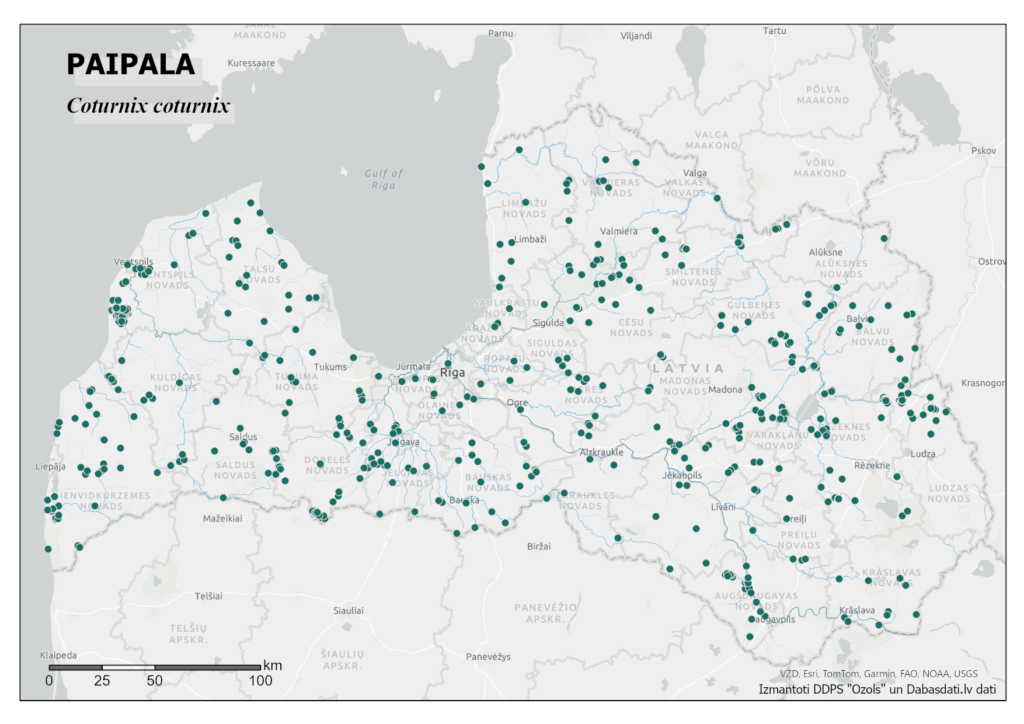
In the wild, quails do not have monogamous relationships, as males mate with several females. Females also mate with multiple males, though less frequently.
In the nesting areas, male quails arrive first and announce their presence with loud singing. When a female arrives, the pair selects a nesting site. The male performs a courtship dance for the female with low-slung wings, ruffling the feathers on his neck and chest.
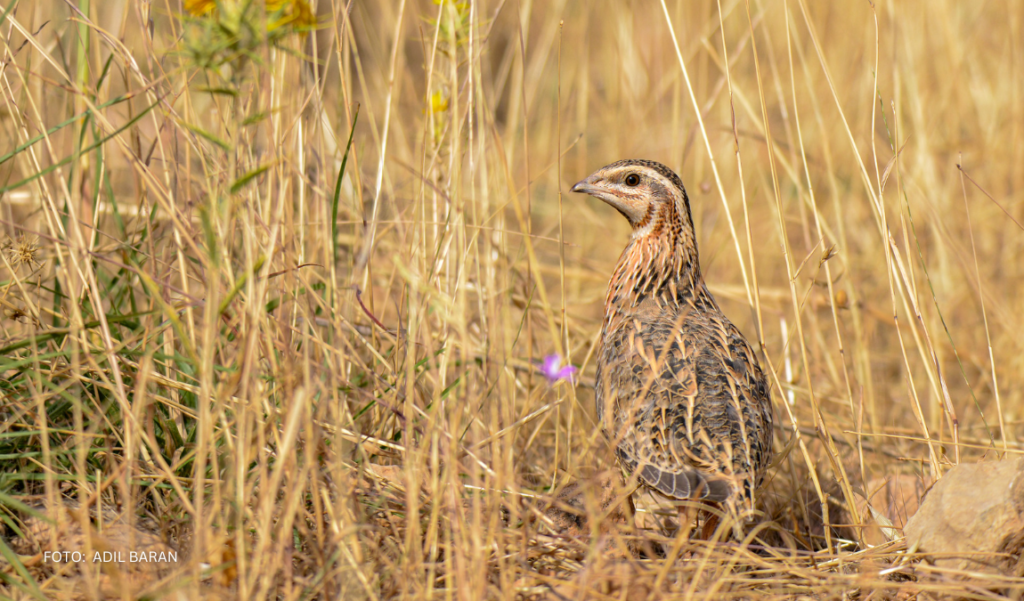
The quail's nest is built in long grass. A wild quail egg weighs approximately 8.5 grams, is greyish or light brown with brown speckles. A typical clutch contains 8—13 eggs. The incubation period lasts 17—20 days. In Europe, nesting most often occurs from May to August. Young quails are capable of flight at just under 2 weeks old.
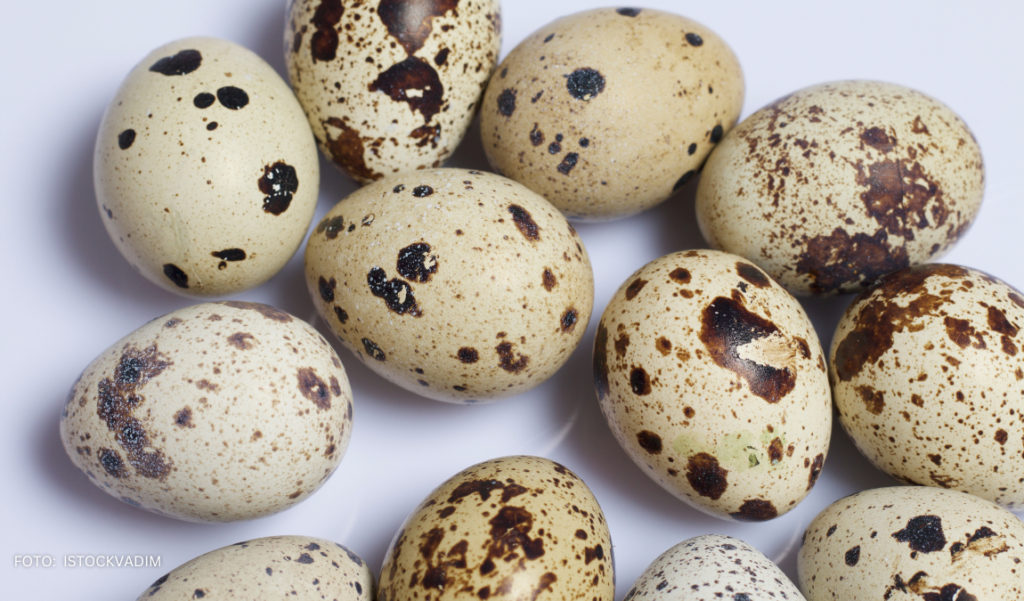
On February 27, more than 70 nature conservation specialists convened at the National Library of Latvia for a seminar on bird conservation issues, organized by the Nature Conservation Agency (NCA) under the LIFE FOR SPECIES project.
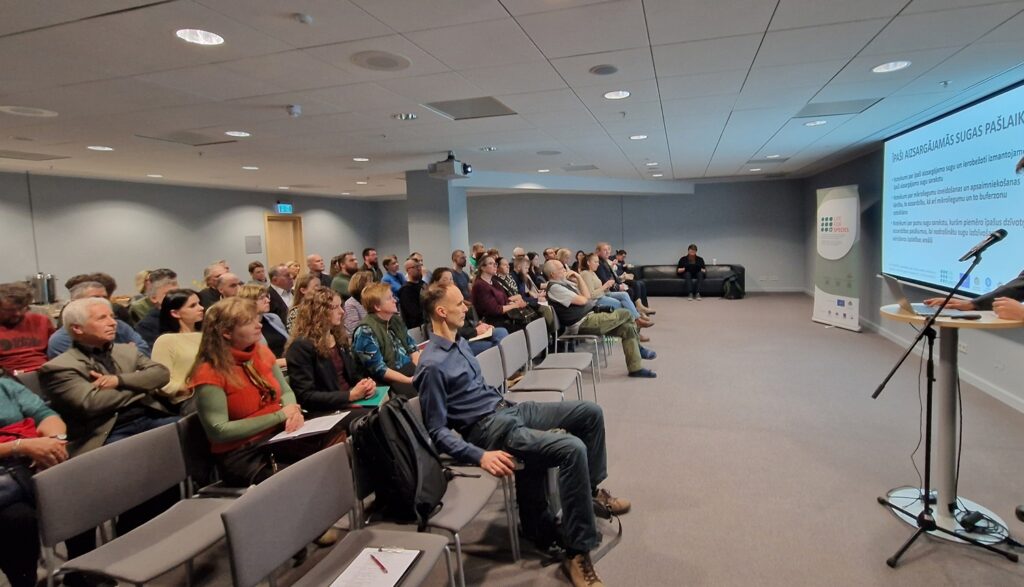
The seminar was held to enhance the knowledge and unify the understanding of bird conservation issues among certified bird conservation experts and specialists from state institutions responsible for nature conservation, and to promote mutual cooperation. Gita Strode, the director of the Nature Conservation Department at the NCA, discussed setting priorities for planning and implementing conservation and management measures for specially protected natural areas. Meanwhile, NCA's Kurzeme Regional Administration expert, Kristaps Vilks, initiated a discussion on solutions for improving the quality of expert opinions. Anete Pošiva-Bunkovska and Gaidis Grandāns (SIA ELLE) introduced the upcoming guidelines for assessing the impact of forest roads and forest drainage systems, commissioned by the NCA.
To improve the process of creating microhabitats for forest-nesting birds, Daina Liepiņa, a representative of the State Forest Service's Forest and Environmental Protection Department, and Jānis Ķuze, a bird expert from the Latvian Nature Fund, shared their experiences and challenges in the microhabitat creation process, from field surveys to decision-making. Pēteris Daknis, a bird expert from the NCA's LIFE REEF project and the Latvian Ornithological Society, presented the results of an owl telemetry study, emphasizing the need for longer seasonal restrictions for the management of young forests in microhabitats and buffer zones created for owl protection.
Monitoring results play a significant role in planning bird conservation measures and assessing impacts. Therefore, Andris Avotiņš, an expert from the Latvian Ornithological Society and the LIFE FOR SPECIES project, introduced the raptor monitoring system and its results. Jānis Donis from the Latvian State Forest Research Institute Silava presented the latest analysis results on the impact of economic activities on the nesting success of the black stork. Monitoring results were also significant in the LIFE FOR SPECIES project's proposal for revising the list of protected species, presented to seminar participants by Viesturs Ķerus, a representative of the Latvian Ornithological Society. In the continuation of the seminar, Agnese Balandiņa, manager of the NCA's Ķemeri National Park Nature Center, initiated a discussion on the increasing impact of active recreation and tourism on the values of specially protected natural areas, including birds nesting in bogs.
February is the month of wetlands, so in its honor, we will explore a wetland plant species - Strawberry Clover (Trifolium fragiferum L.). It's noteworthy that this year wetlands have also been recognized as the habitat of the year in Latvia.
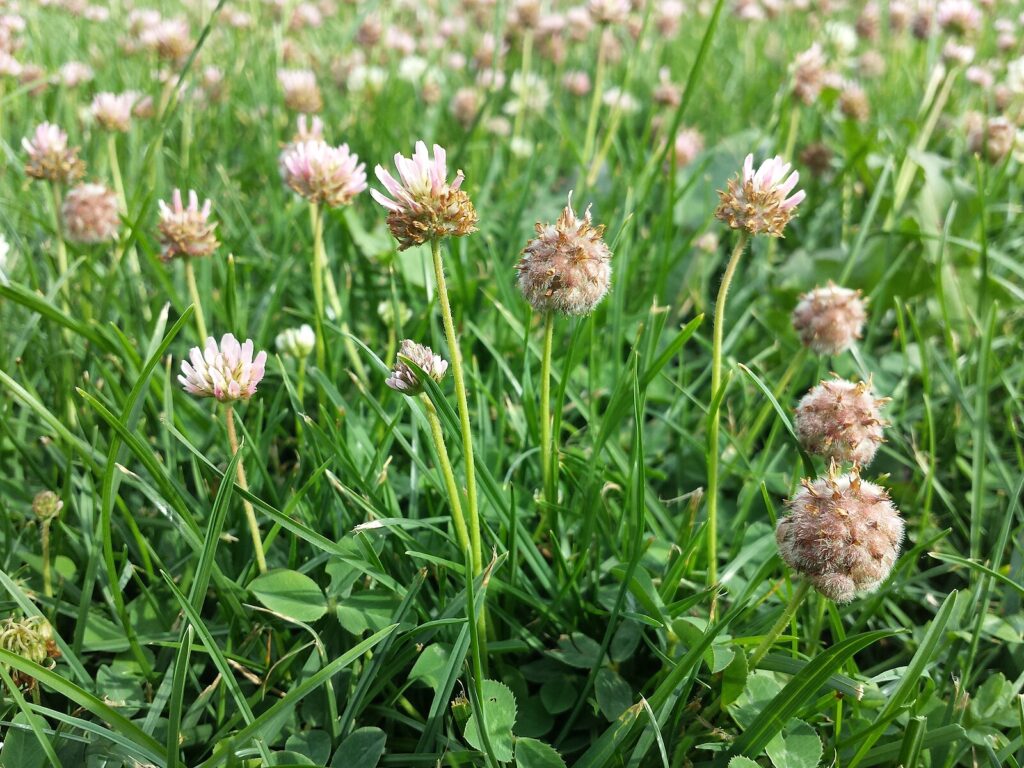
Strawberry Clover got its name due to its inflorescence head resembling a strawberry, although some insist it's the fruit cluster that resembles a strawberry more. In the fruiting stage, when the corolla of each flower has fallen, the pink calyx swells and is covered with many hairs, resembling a strawberry.
The leaf of Strawberry Clover consists of three leaflets. It is a perennial plant, about 10 to 30 cm tall from the ground, and its color varies from soft pink to bright pink. Strawberry Clover blooms from June to September.
Hidden within the round, fluffy calyx is a small pod with one or two seeds. If the head of the calyx falls off, it can float on water to a new location – acting as a dispersal raft for the plant.

In Latvia, this plant is mostly found in coastal meadows and lagoon lake floodplain meadows - predominantly around Lake Liepāja, near Riga, and in the vicinity of Salacgrīva and Ainaži.
Interestingly, in Latvia, the plant has also been found in the Daugava valley near Daugavpils, which is peculiar because the area is far from the coast.
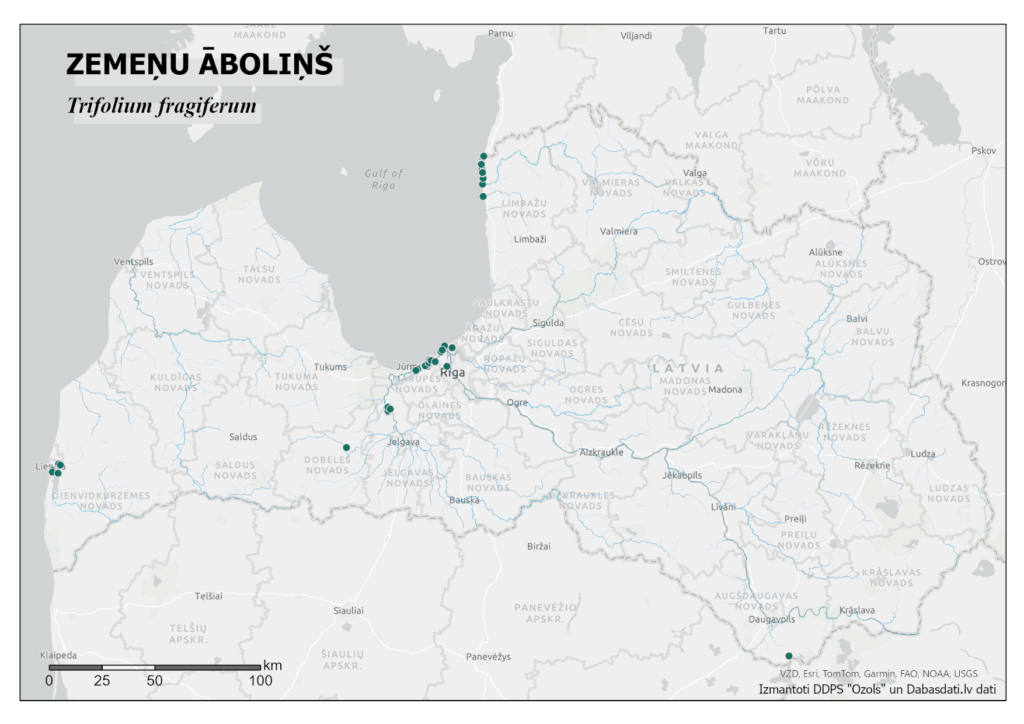
Overall, this species has a wide distribution range across almost all of Europe, the Caucasus, Western Siberia, Central Asia, and North Africa. In these regions, the distribution of Strawberry Clover is not as closely tied to coastal areas as it is in Latvia.
The spread of Strawberry Clover is currently negatively affected by the decrease in natural meadow areas in Latvia, which require mowing or grazing. In Latvia, the species is included in the list of specially protected species.
Interestingly, in Latvia, the plant has also been found in the Daugava valley near Daugavpils, which is peculiar because the area is far from the coast.
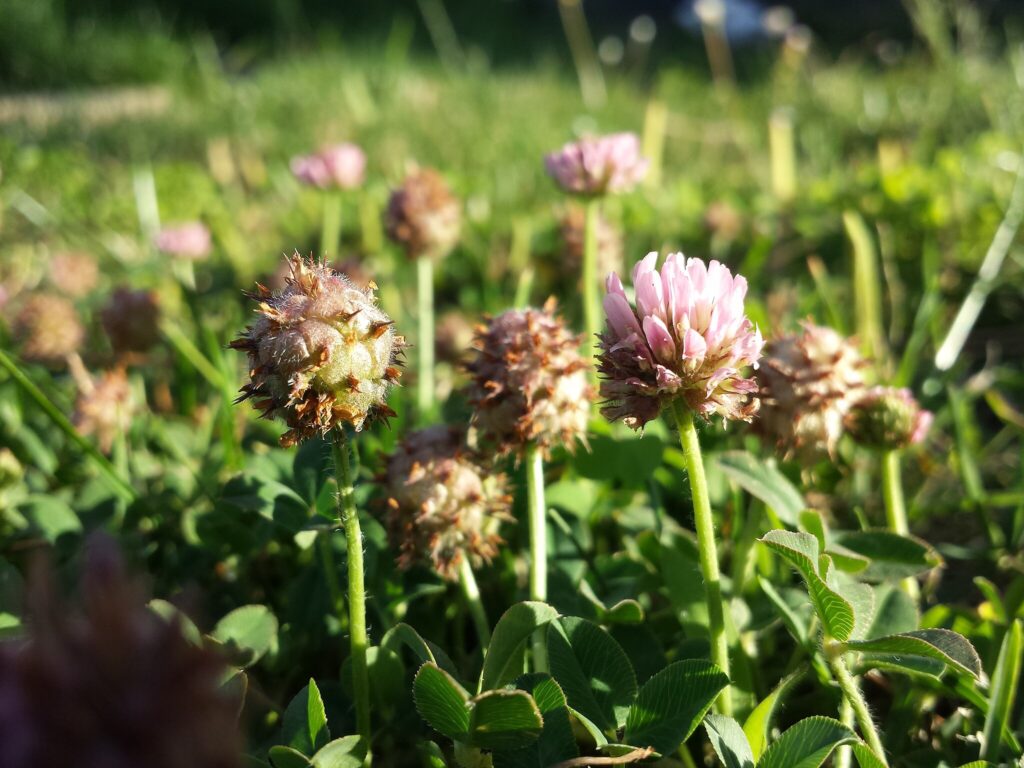
Overall, this species has a wide distribution range across almost all of Europe, the Caucasus, Western Siberia, Central Asia, and North Africa. In these regions, the distribution of Strawberry Clover is not as closely tied to coastal areas as it is in Latvia.
The spread of Strawberry Clover is currently negatively affected by the decrease in natural meadow areas in Latvia, which require mowing or grazing. In Latvia, the species is included in the list of specially protected species.
The mountain hare (Lepus timidus) is often confused with the brown hare (Lepus europaeus), as the two species can only be visually distinguished during winter. Although both hare species are related, the mountain hare is a forest dweller, while the brown hare prefers open landscapes. Where the ranges of the two species overlap, the brown hare tends to dominate, making it more commonly found in Latvia than the mountain hare.
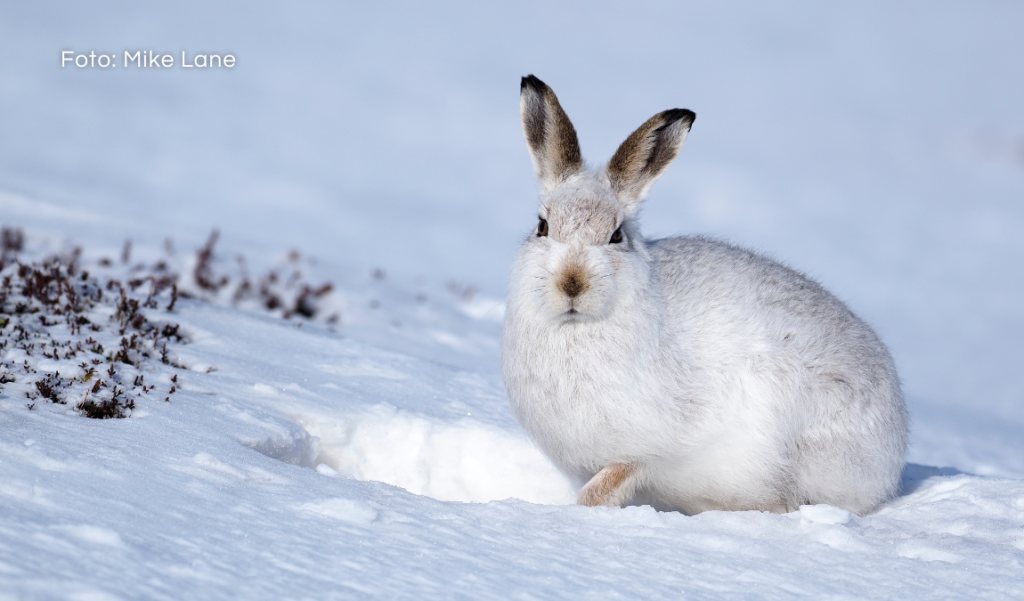
The mountain hare's coat changes twice a year, taking about 2.5 months each time. In the spring, it gradually replaces its fur starting from the front of the body, and in the autumn, the change occurs in the opposite direction. In summer, its back is brownish or brownish-grey, the head is darker, and the sides are lighter, with a whitish belly. In winter, the coat is entirely white, except for the black tips of the ears. In contrast, the brown hare is more of a brown color and only turns greyish in the spring.
The mountain hare's tail is short (6-7 cm) and rounded, unlike the brown hare's, which is longer, elongated, and has a distinct dark spot on the top. The mountain hare's ear tips are black throughout the year, and the edge of the ear is decorated with a white stripe (the brown hare's is dark). The hind legs (13-17 cm) are significantly longer than the forelegs (7-9 cm), and the feet are rounded. The underside of the feet is densely covered with cushioning fur. The forelegs have five toes, while the hind legs have four. On average, the mountain hare is 45-50 cm long and weighs 3-5kg.
Mountain hares live an average of 8 - 9 years. They are active all year round, with their activity peaking at dusk and during the night. They are territorial (inhabiting a specific area) and solitary (living alone). They are most commonly found in mixed forests bordering on growing clearcuts, meadows, grasslands, swamps, or water bodies.
In winter, the fur on the mountain hare's hind legs grows thicker, serving as snowshoes to prevent sinking deeply into the snow. Meanwhile, its teeth grow throughout its life – as they wear down from gnawing, they must regrow. Unlike rodents, it has four incisors in the lower jaw, not just two. Its eyes are positioned to give nearly a 360° field of vision. However, its overall vision is poorly developed – it can only distinguish moving objects from a distance.
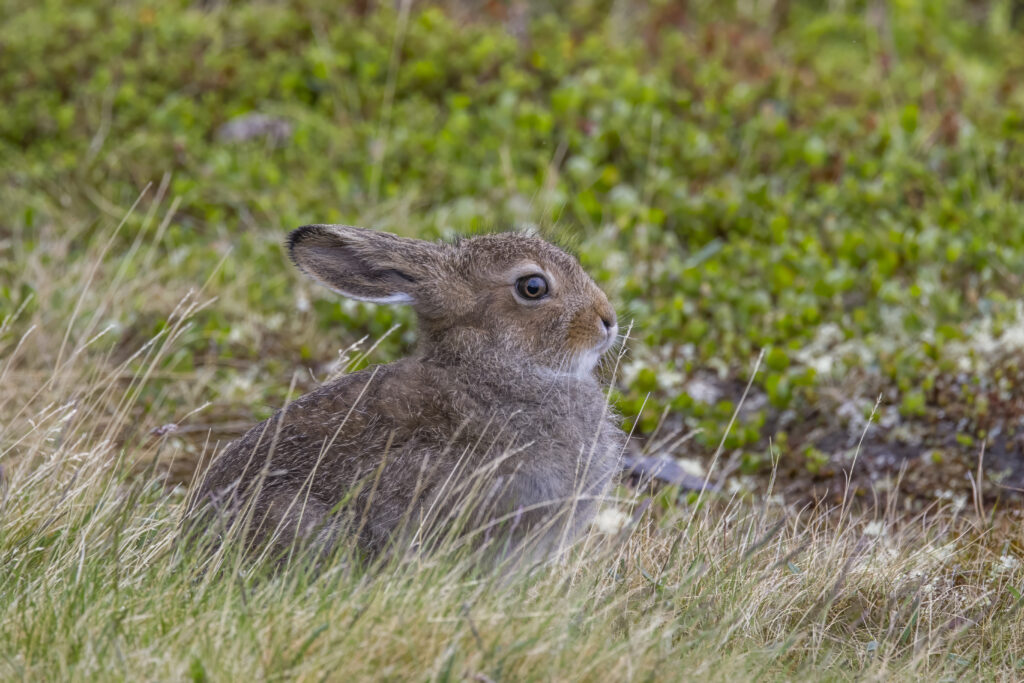
The hare is one of the fastest animals in Latvia – capable of speeds up to 50-60 km/h when fleeing danger. To evade predators, hares confuse their tracks – moving in long jumps, making wide sidesteps, and looping back to their previous paths. When pursued by predators, hares flee by running in loops.
In the summer, the mountain hare is a herbivore - feeding on the green parts of plants. In winter, it becomes a browser – feeding on the branches and bark of leafy trees, mosses, and lichens. It practices coprophagy, or eating its own excrement, which increases the digestibility of food and helps maintain the gut flora. Hares tend to gnaw on the antlers of deer, elk, and roe deer, and scrape on the skeletal remains of animals, thereby ingesting necessary minerals.
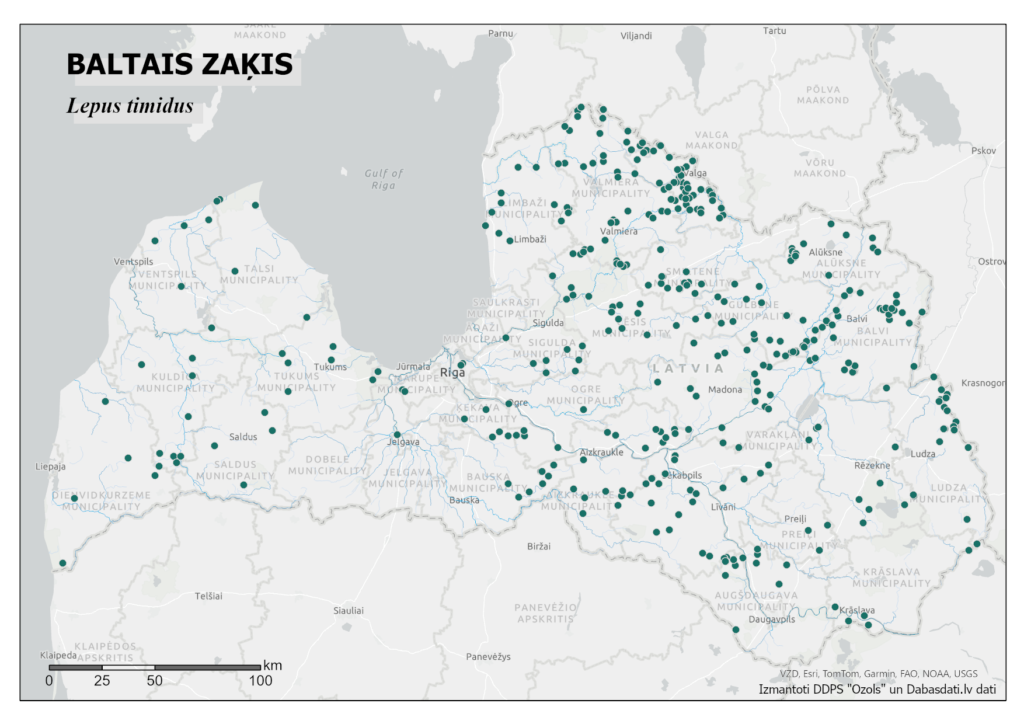
The population size is influenced by climate change, human activity, predators, diseases, and other factors. In southern Sweden, the population has decreased due to warmer winters. In Lithuania, it is considered a vulnerable species (VU) due to predator proliferation and habitat degradation. In Latvia, the population has declined compared to the beginning of the 21st century, presumably due to several factors – an increase in snowless periods, the use of plant protection products, competition, and hybridization with the brown hare. However, the species is assessed as least concern (LC), as the population has been stable over the last 10 years, at about 10-11 thousand individuals.
The mountain hare is polygamous – the female attracts several males, among whom a boxing-like battle ensues. The first mating season begins in March, and the second in May. The female has 1-2 litters per year, with pregnancy lasting an average of 51 days. Each litter consists of 4-7 young, with summer litters typically having more. The newborns are thickly furred, sighted, and capable of moving independently from day one. The mother nurses the young 1-2 times a day, spending the rest of the time away from them to reduce the risk of predation. The development of the young is rapid – by 7-9 days old, they begin to eat grass in addition to milk, and by 3-4 weeks old, they become independent. The mortality rate of the young is high – about a third of the newborns survive the first month. Mountain hares reach sexual maturity at 11 months of age.
Included in the Bern Convention and the Habitats Directive, as a species whose individuals may be obtained provided the species maintains a favorable conservation status. In Latvia, it is a protected species with limited use, which may be hunted from October to January.
The mountain hare's natural enemies include predatory birds – eagles, owls, and mammals – foxes, stoats, lynxes, wolves, and stray dogs.
On December 14, at the Riga Zoo, the LIFE FOR SPECIES project organized a seminar for nature experts dedicated to the conservation of amphibian and reptile species.
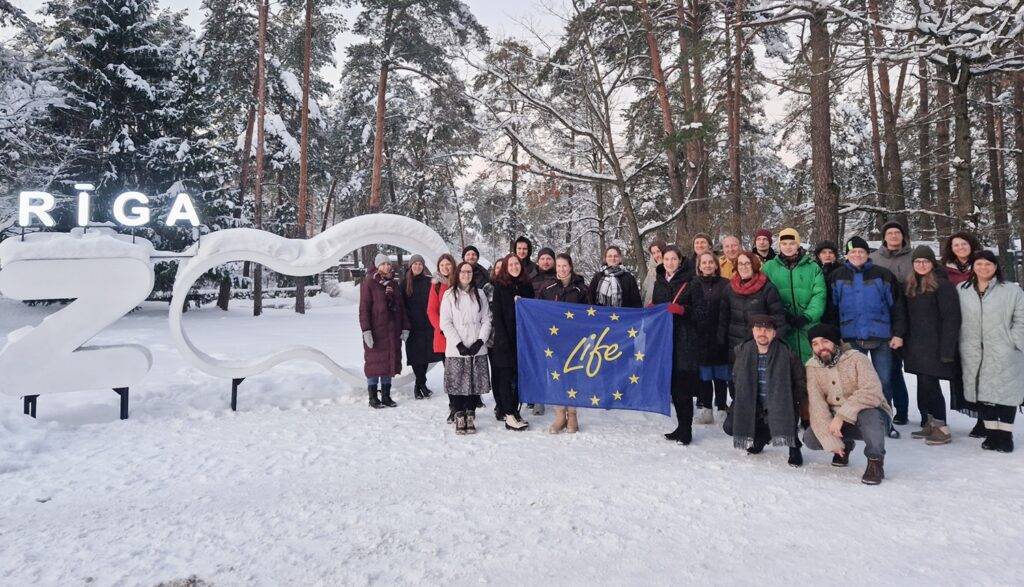
Amphibians and reptiles are fascinating and significant animal groups within Latvia's nature conservation system. These species are particularly sensitive to various impacts of human activities, both direct and indirect, as well as environmental and climate changes, diseases, invasive species, and wildlife trade. Therefore, a wide range of conservation measures are necessary, starting from public education and engagement, practical habitat restoration and protection, to supplementing wild populations with individuals bred in captivity.
Although there are few amphibian and reptile experts in Latvia, the country has many excellent examples of conservation measures for these species. During the seminar, specialists from the Riga Zoo, Elza Birbele, Rebeka Šķērstiņa, and Alessandro Di Marzio, introduced participants to the latest results of a tree frog population restoration project, as well as the experience and opportunities of Latvian experts in global endangered species conservation projects.
A representative from the Latgale Zoo, Mihails Pupiņš, addressed the conservation issues of the fire-bellied toad and the European pond turtle, as well as the problems with invasive species. Meanwhile, specialists from the Nature Conservation Agency, Ilze Reinika, Alise Ozoliņa, and Rihards Miķelsons, highlighted the importance of public engagement, presenting the results of the campaign “Mission Toad. Save the Prince!” and initiating discussions on public monitoring of amphibians and reptiles and the involvement of the public and experts to reduce illegal trade in these animals.
Andris Čeirāns, an amphibian and reptile expert from the University of Latvia, introduced the assessment results of species endangerment, best practice examples, and experience in developing conservation plans. He also stimulated discussions on the main challenges and priorities for the near future in the conservation of amphibians and reptiles in Latvia.
Jēkabs Dzenis, coordinator of the LIFE FOR SPECIES project, stated: “The seminar provided a unique opportunity to bring together leading Latvian researchers and conservation practitioners in the field of amphibians and reptiles, nature conservation experts, and students with a keen interest in the conservation of these animals. Such sharing of knowledge, experience, and ideas is extremely important for addressing the countless challenges in the field of amphibian and reptile conservation, both by increasing the capacity of existing experts and by promoting cooperation and involving new specialists.”
The seminar was organized by the Nature Conservation Agency in collaboration with the Biology Institute of the University of Latvia and the Riga Zoo.
In December, many people venture into nature to gather materials for creating eco-friendly holiday decorations. This time is particularly important to remind us of the crucial balance between holiday cheer and protecting the environment. Often, we are unaware of how fragile our surroundings are and how our careless actions can harm rare and endangered species. That's why we have chosen Menegazzia terebrata as this month's protected species. This lichen, when encountered in nature, should be left undisturbed and protected.
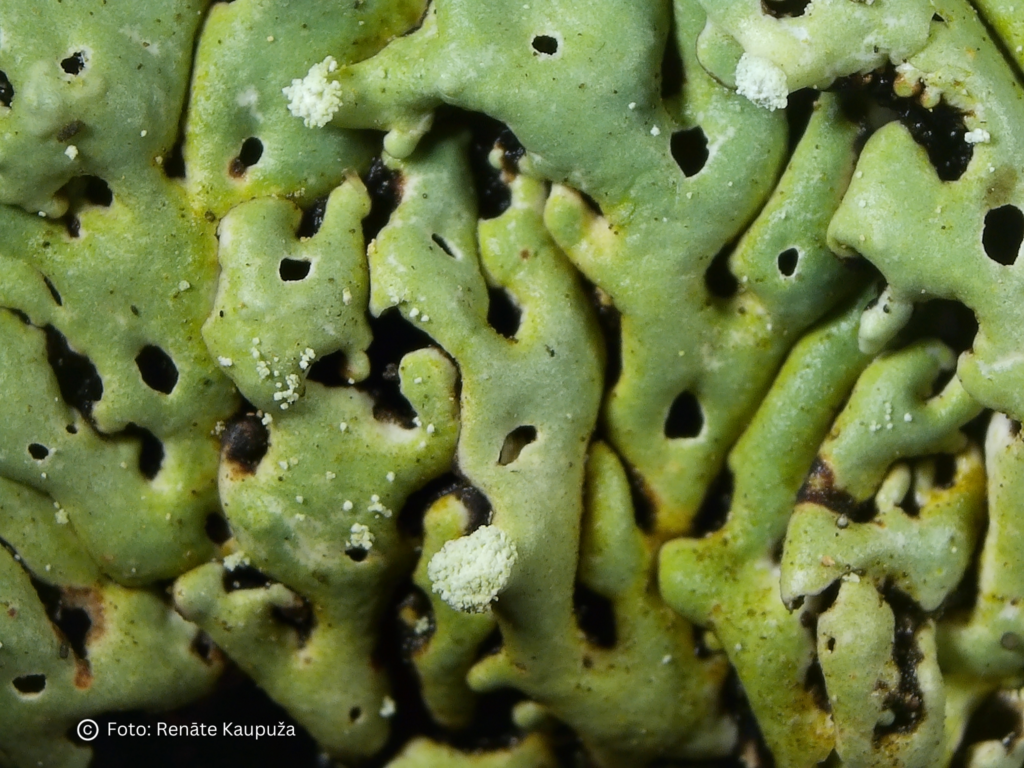
Thallus of Menegazzia terebrata is leaf-like, rosette-shaped, or irregular. Its upper surface is mostly greyish-green, sometimes darker in the middle, matte, occasionally slightly shiny, naked, with round or oval openings which give the lichen its Latvian name. Its core is white with a cavity inside. The underside is very wrinkled, black, lighter at the edges, with a visible black border.
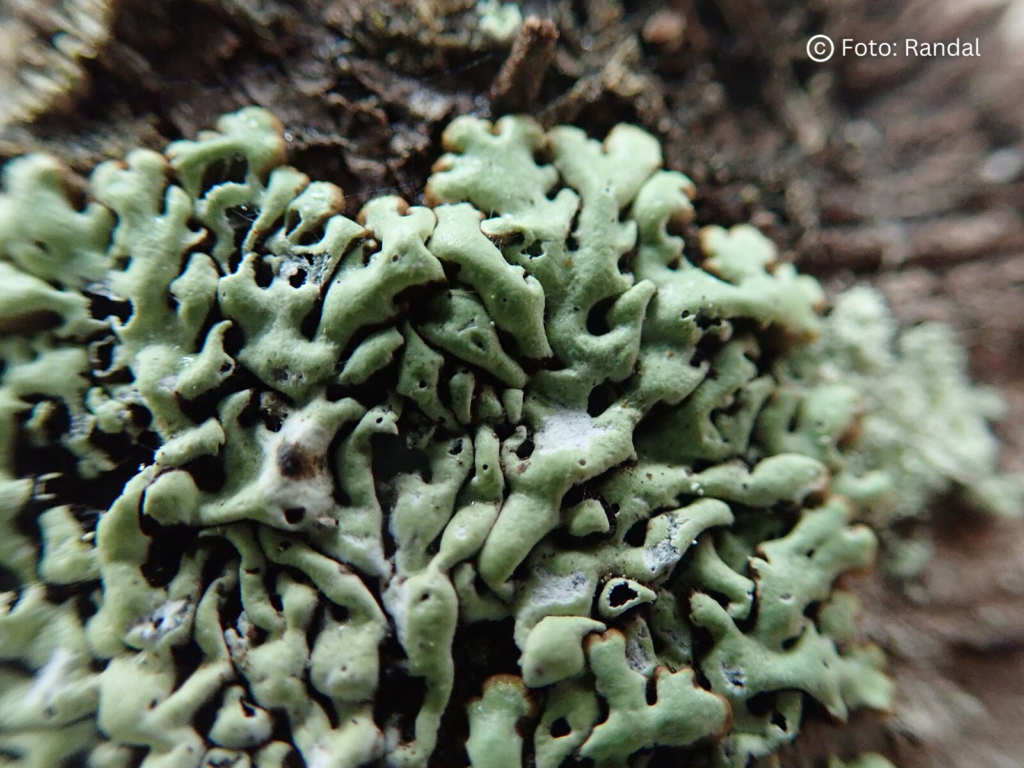
In Latvia, the majority of this species' population is concentrated in the eastern part, with scattered occurrences in the northern, central, and Kurzeme regions. In recent years, the number of sightings has significantly increased, due to the growing expertise of nature experts in identifying and detecting this species.
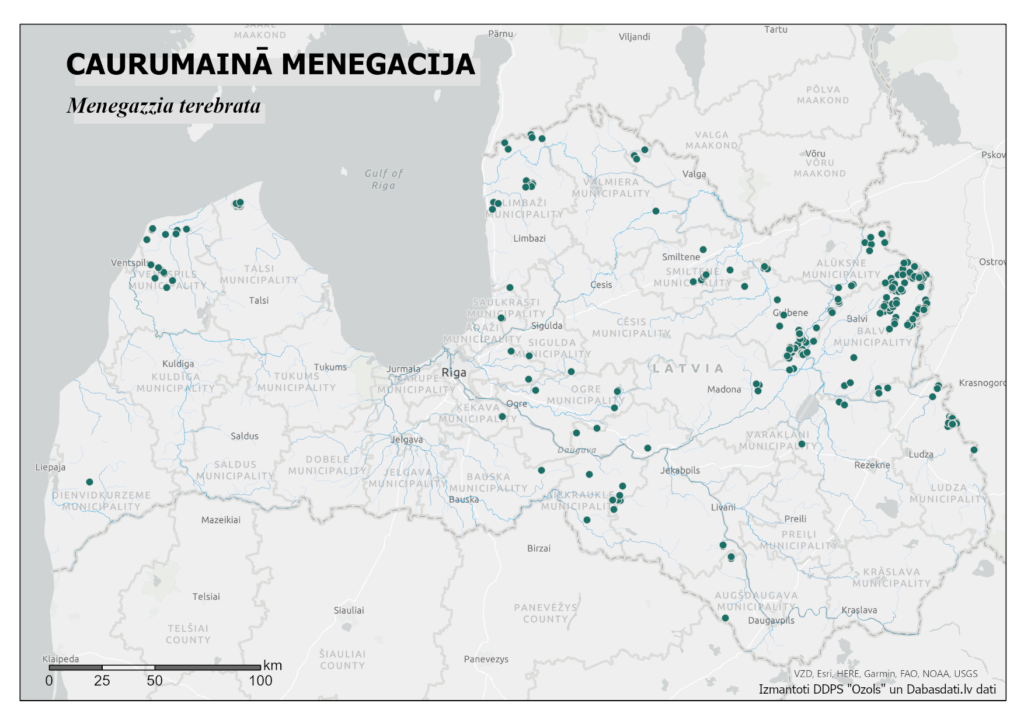
Species distribution map in Latvia. Author: Jānis Ukass.
The species is mainly found in old, natural black alder forests with elevated and stable air humidity. The most negative impact on the species comes from forestry and drainage-induced changes in habitats.
If you spot the Menegazzia terebrata while in nature, report the observation to the Nature Conservation Agency or on the Dabasdati.lv portal. We look forward to receiving news and photographs of species observations on our Facebook page too.
On November 25th, a session of the Univeristy of Latvia Young Biologists' School took place under the guidance of invertebrate species expert Rūta Starka as part of the LIFE For Species project. During the session, attending students had the opportunity to immerse themselves in the role of researchers and learn more about the assessment of species endangerment according to IUCN criteria, as well as the decision-making process for species to be included in the potential list of especially protected species.
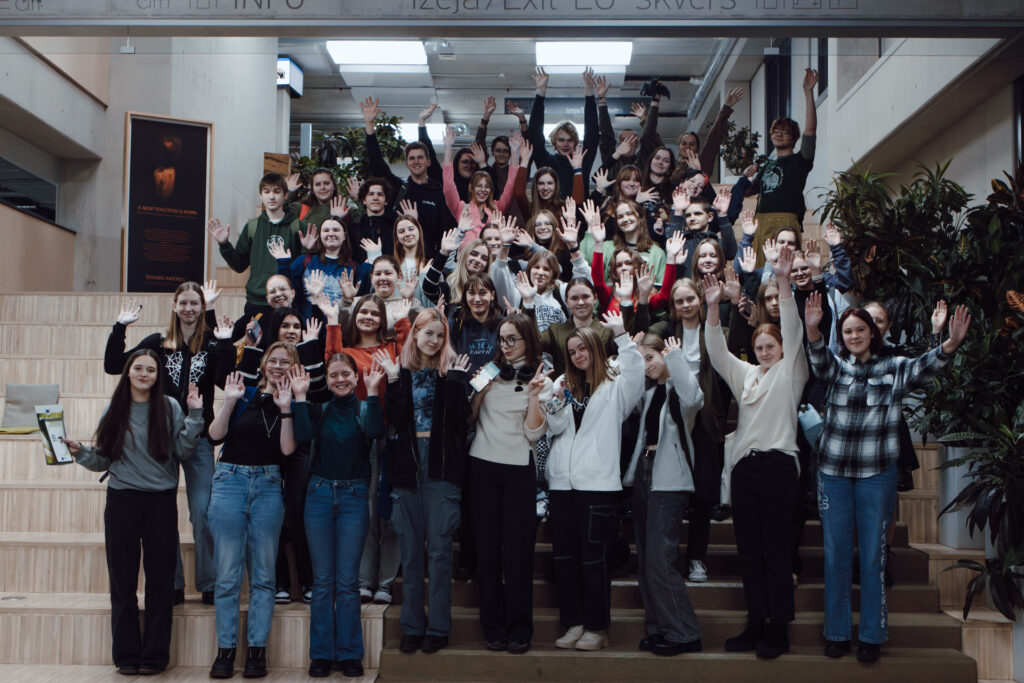
The Young Biologists' School is an educational program for students aimed at fostering interest in biology as a science and potential career path, providing opportunities to expand their knowledge and gain insights into the life of a biology student.
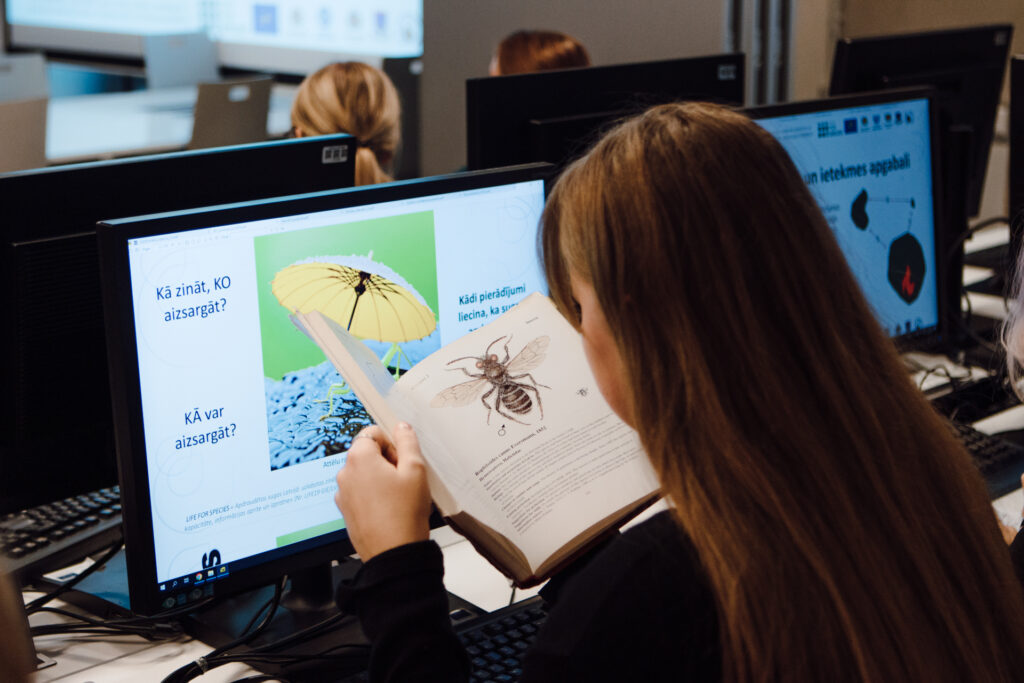
82 students from grades 7 to 12 participated in the session led by R. Starka. Throughout the event, the youths enthusiastically completed tasks, asked questions, and independently carried out various assignments.
During an independent task, students calculated the AOO and EOO of the slender blue-winged grasshopper as well as evaluated it according to the B criterion. Students had to understand where to acquire information about the condition of habitats in Latvia and population trends of species in Europe, and compare historical and contemporary distribution data along with the limitations of their interpretations. Finally, they had to justify the necessity for species protection.
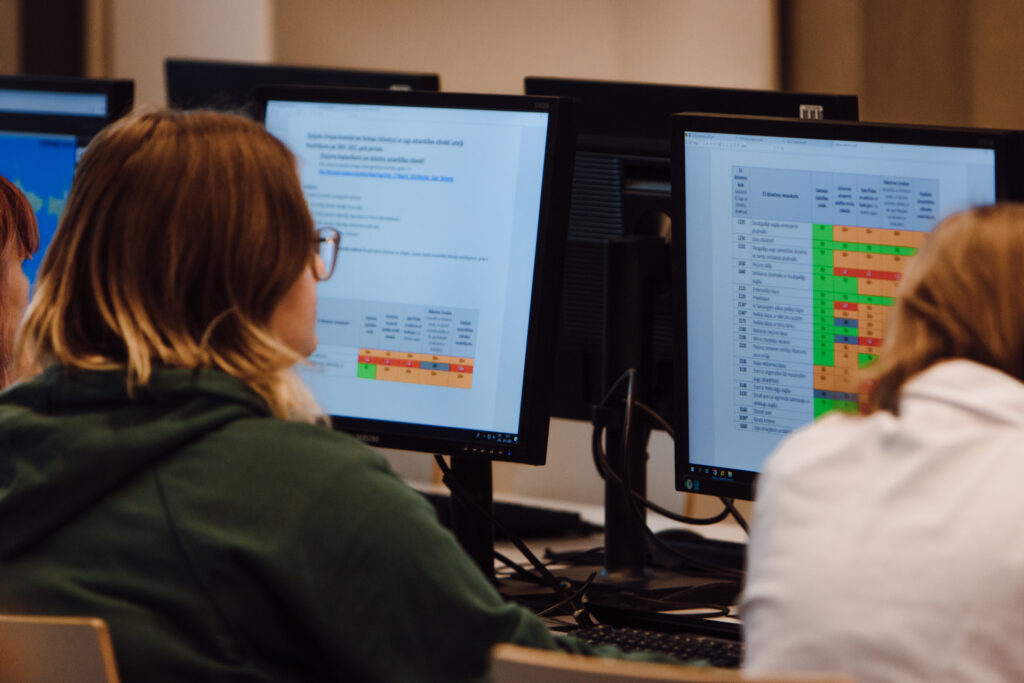
After the session and tasks, students received materials developed during the project - post cards. Additionally, the top three winners in each age group received a project brochure and booklet.
Photo gallery - click on any image to view. Photos by Agate Seržante
As November draws to a close, with most bats entering their winter hibernation, we want to share more about a protected bat species found in Latvia - the Barbastelle Bat (Barbastella barbastellus).
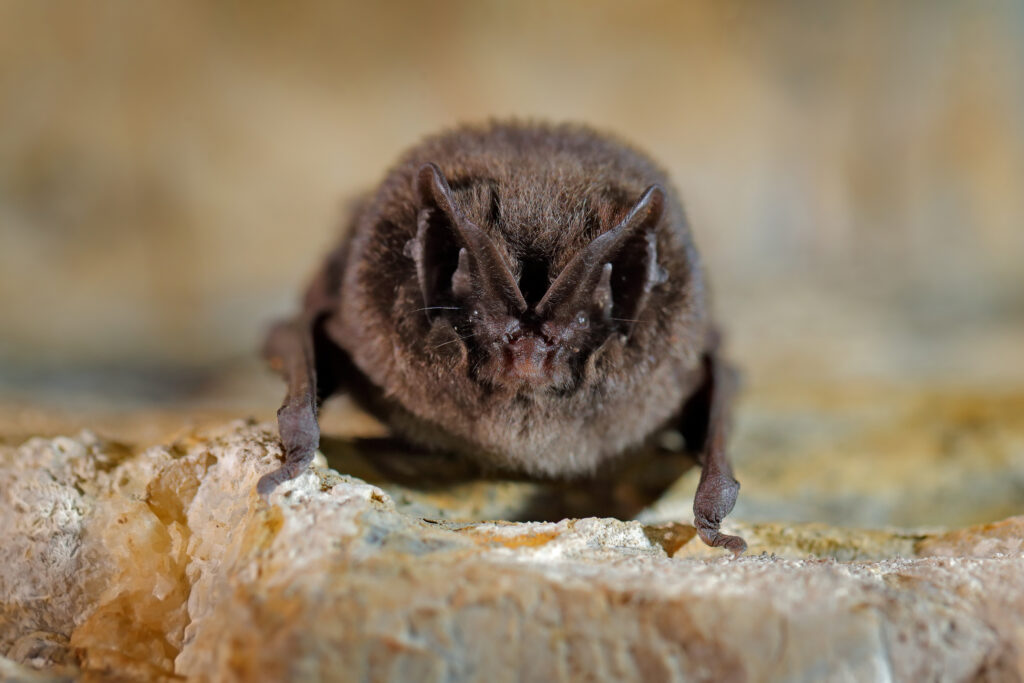
The Barbastelle Bat is a medium-sized bat, measuring 43-64 mm in body length. It is characterized by dark brown fur, sometimes adorned with grey or even yellowish tips on the back. Its skin color is dark brown. A distinctive feature, aligned with its Latvian name, is its broad, triangular ears that are joined at the forehead. The ear tip is triangular with a pointed, slightly extended tip.
It's typical for the females of this species to give birth to one offspring per year. The lifespan of the bat varies in different sources, but on average, it ranges from 5.5 to 10 years. The maximum known age for a member of this species is 22 years.
The Barbastelle Bat is a wintering species in Latvia, not known for long migrations. It hibernates mainly in old and less-used cellars. This bat is a distinct forest species, traditionally associated with broadleaf forests. In Latvia, suitable old broadleaf forests are scarce, but the species is registered in old manor parks and various types of forest plantations.
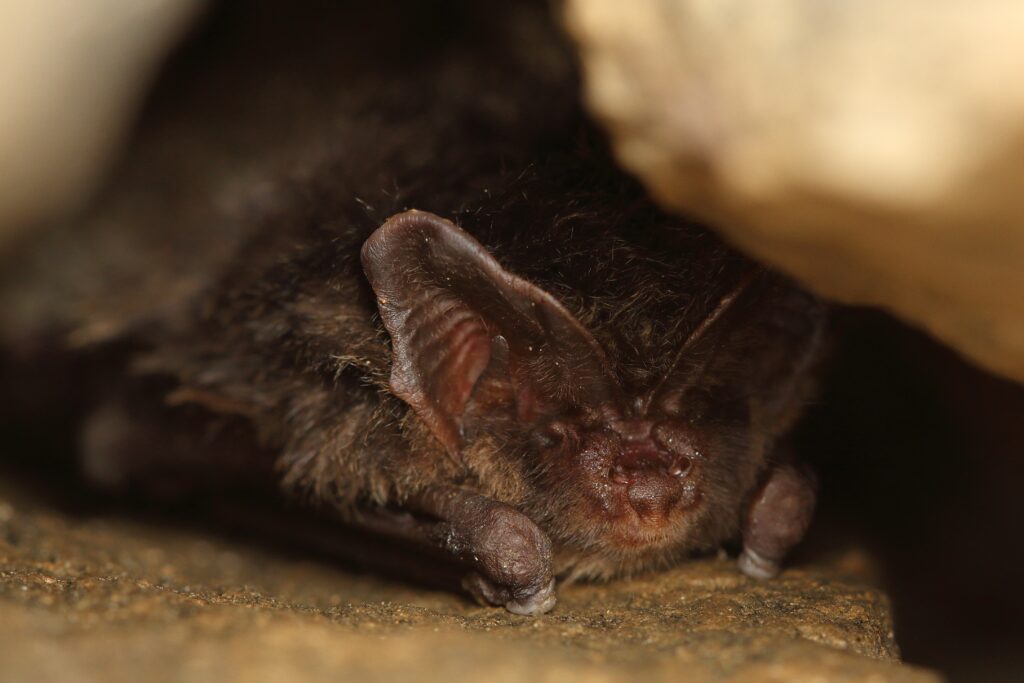
It is important to note that bats do not nest but roost in caves, tree hollows, as well as in attics and cellars of buildings. Unfortunately, the renovation and demolition of old buildings often threaten bats, as they reduce the number of suitable daytime hideouts and breeding sites. Additionally, the cutting down of old, hollow trees is harmful to bats. Another risk factor is the decline in insects, which threatens bats' ability to find enough food.
In Latvia, the main threat to the species is forestry, which reduces the number of old and decaying or dead trees with suitable hideouts, fragments forest areas, and alters the moisture regime due to drainage.
The availability of suitable hiding places in forests is one of the determining factors for the presence of this species in Latvia. This bat's roosts are less commonly found in buildings. They hibernate in underground roosts, with known hibernation sites in various old cellars in Latvia.
The European barbastelle preys on night-flying moths, though it can hunt other insects as well.
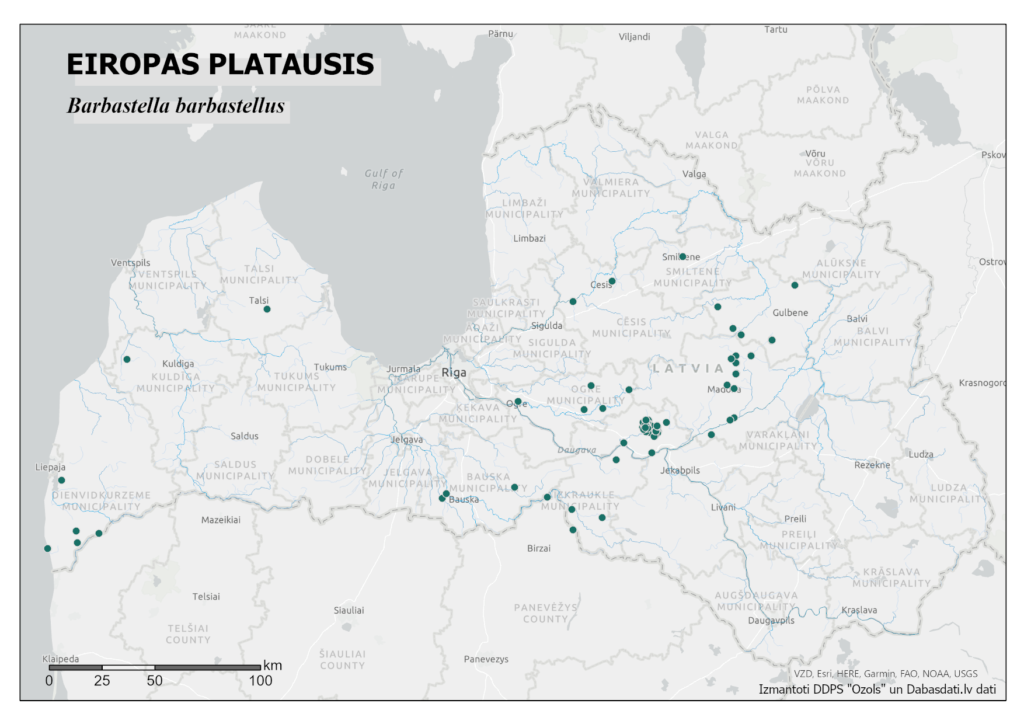
The Barbastelle Bat has been observed three times in hibernation sites in the caves of Gauja National Park, but no individual of this species has been recorded in the park's territory in the last 30 years. Current known findings in protected areas are only in the “Dunika” nature reserve and the “Ogres ieleja” and “Talsu pauguraine” nature parks.
If you spot a Barbastelle Bat in nature or in your home's cellar, report the observation to the Nature Conservation Agency or on the Dabasdati.lv portal. We welcome news and photographs of species observations on our Facebook page as well. Remember, when encountering bats, do not disturb their rest and avoid making any lound sounds or turning on bright lights, such as camera flash.
In the cold coastal waters of Northern Europe lives a fish that often goes unnoticed due to its seemingly unremarkable appearance. However, the eelpout (Zoarces viviparus) is an important species in Latvia, so this month we honor this mysterious fish.
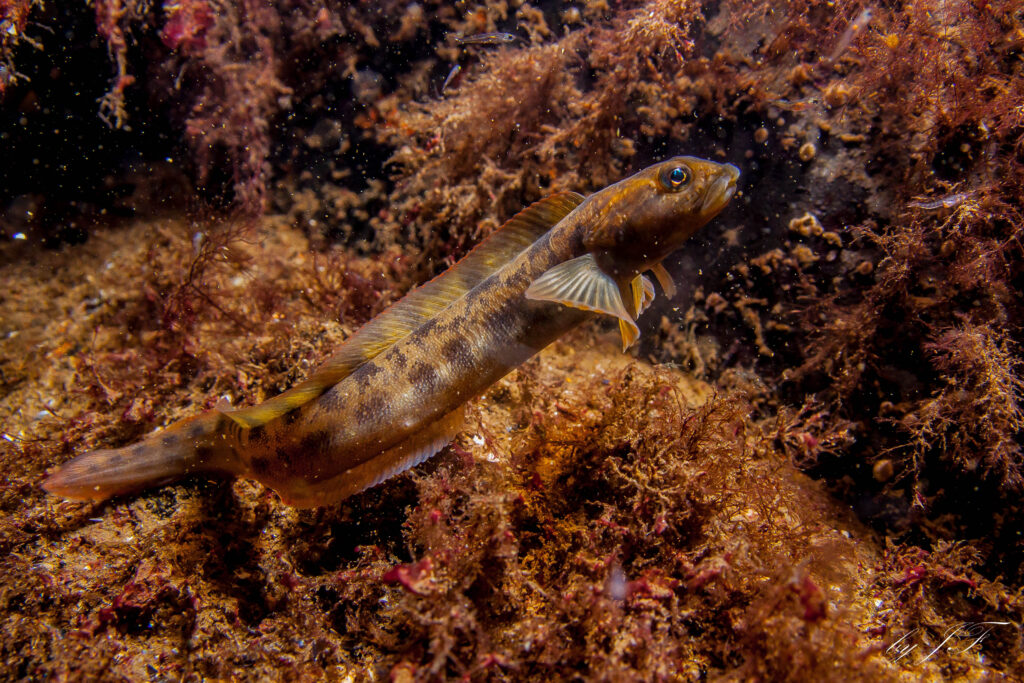
The eelpout has a long, somewhat snake-like body, varying in color from brown to green tones, depending on its environment. This coloration helps the eelpout hide from natural predators, serving as effective camouflage when the fish rests in the rocky or muddy seabed. Eelpouts can reach up to 52 cm in length, up to 40 cm in the Baltic Sea, usually measuring 25-35 cm.
Unlike many other fish species, eelpouts are viviparous - internal fertilization occurs in August-September, and after 4-6 months, the female gives birth to 30-400 offspring, each 35-55 mm long. The offspring are fully developed at birth, most commonly occurring in winter when water temperatures are particularly low. The gestation period is also notable for its length, six months, which is long compared to other fish species. The young are born from December to February, during the coldest water temperatures.
The eelpout is a benthic marine fish, feeding mostly on worms, crustaceans, and mollusks, and sometimes hunting smaller fish and their eggs.

This species is widely distributed and commonly found in the coastal waters of Northern Europe. Its range extends from the White Sea to the English Channel, the Irish Sea, and includes the waters of the Baltic Sea, inhabiting both the open sea and the Gulf of Riga. It is particularly abundant in the northern and eastern parts of the Gulf of Riga. The eelpout is not migratory and has a relatively stationary lifestyle, making it a useful environmental indicator in toxicological studies and pollution monitoring. Interestingly, eelpouts can inhabit waters up to 40m deep.
In the Gulf of Riga, there are relatively old traditions of eelpout fishing. The species is also caught as bycatch in other specialized fisheries. Historically, intense fishing led to a rapid decline in stocks, compounded by a rapid deterioration in marine environmental quality and the invasion of large schools of cod, which also fed on eelpouts. Following a significant decline in the eelpout population in the Gulf of Riga, fishing for eelpouts was closed from 1980 to 1989. Fishing was reopened in 1990 with very low catch quotas, allowing eelpout fishing along the coast and regulating the catch.
As a cold-water species, the eelpout is negatively affected by rising water temperatures due to climate change, impacting its growth, development, and breeding success. Pollution of marine waters and ecosystem changes also adversely affect the species' reproduction. The invasive round goby is considered a threat to the eelpout, as it occupies similar niches and competes for food resources. As mentioned earlier, specialized eelpout fishing in the past had a significant impact on the population. Nowadays, specialized eelpout fishing occurs on a very small scale with passive fishing gear, and the species is caught in small quantities as bycatch in other gear.
Although fishing intensity is no longer as high, the eelpout population in Latvian waters has decreased by more than 90% over the last 20 years due to climate and other factors.